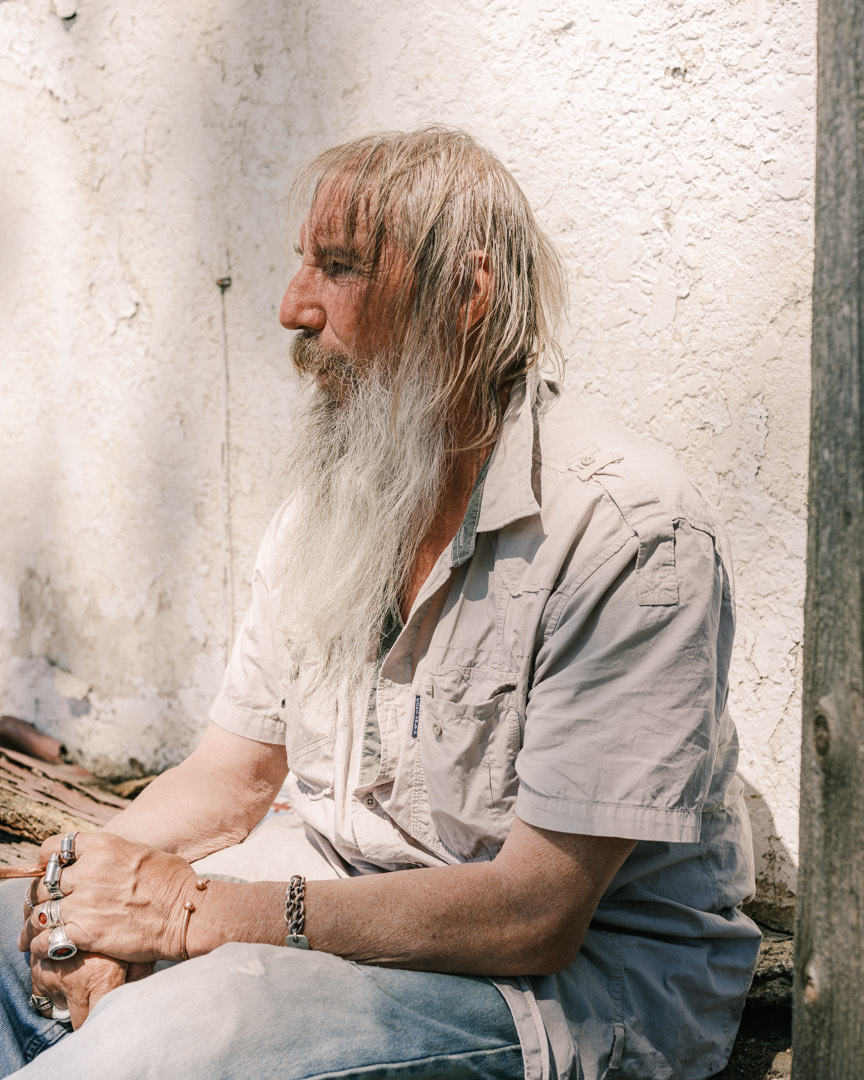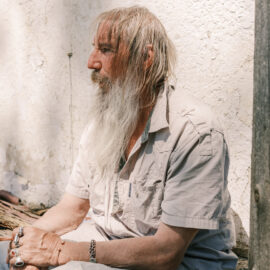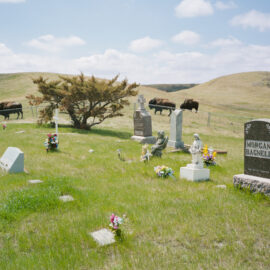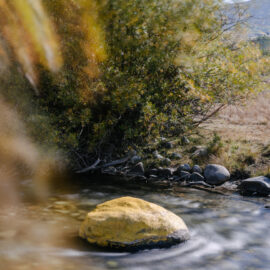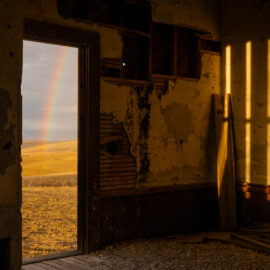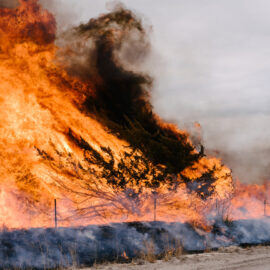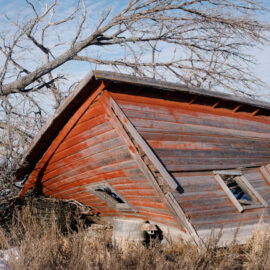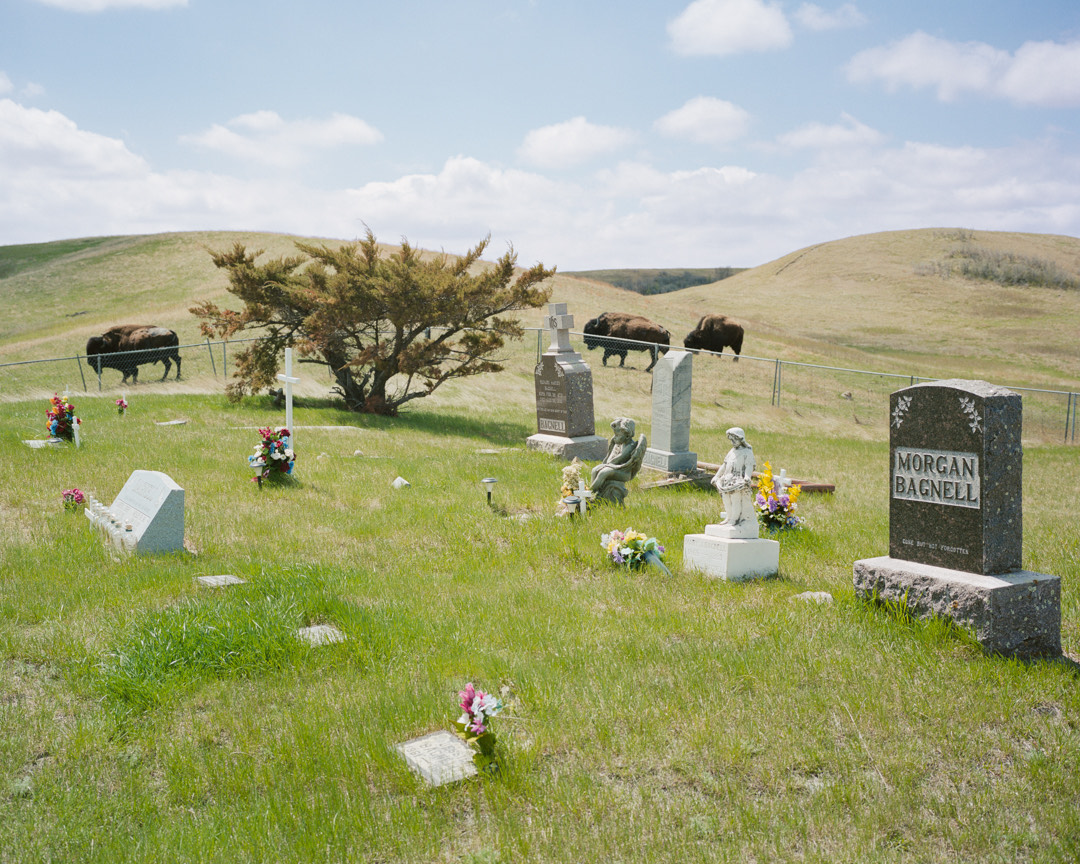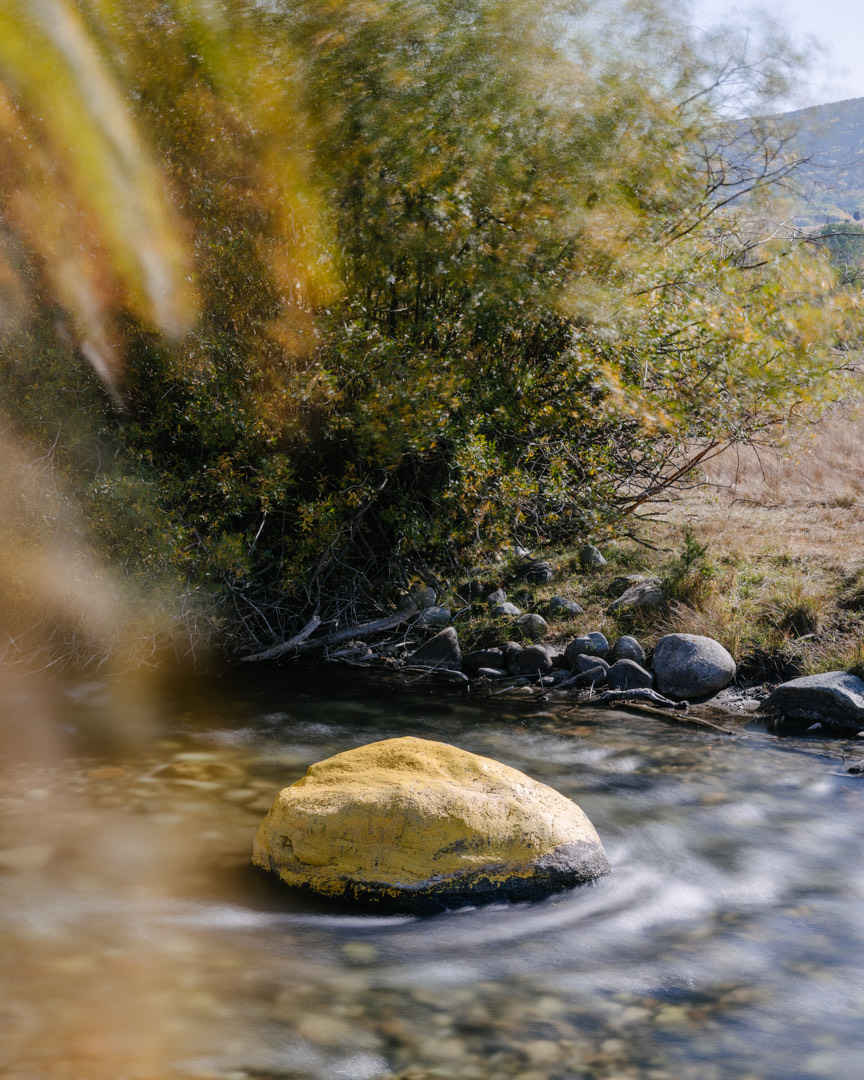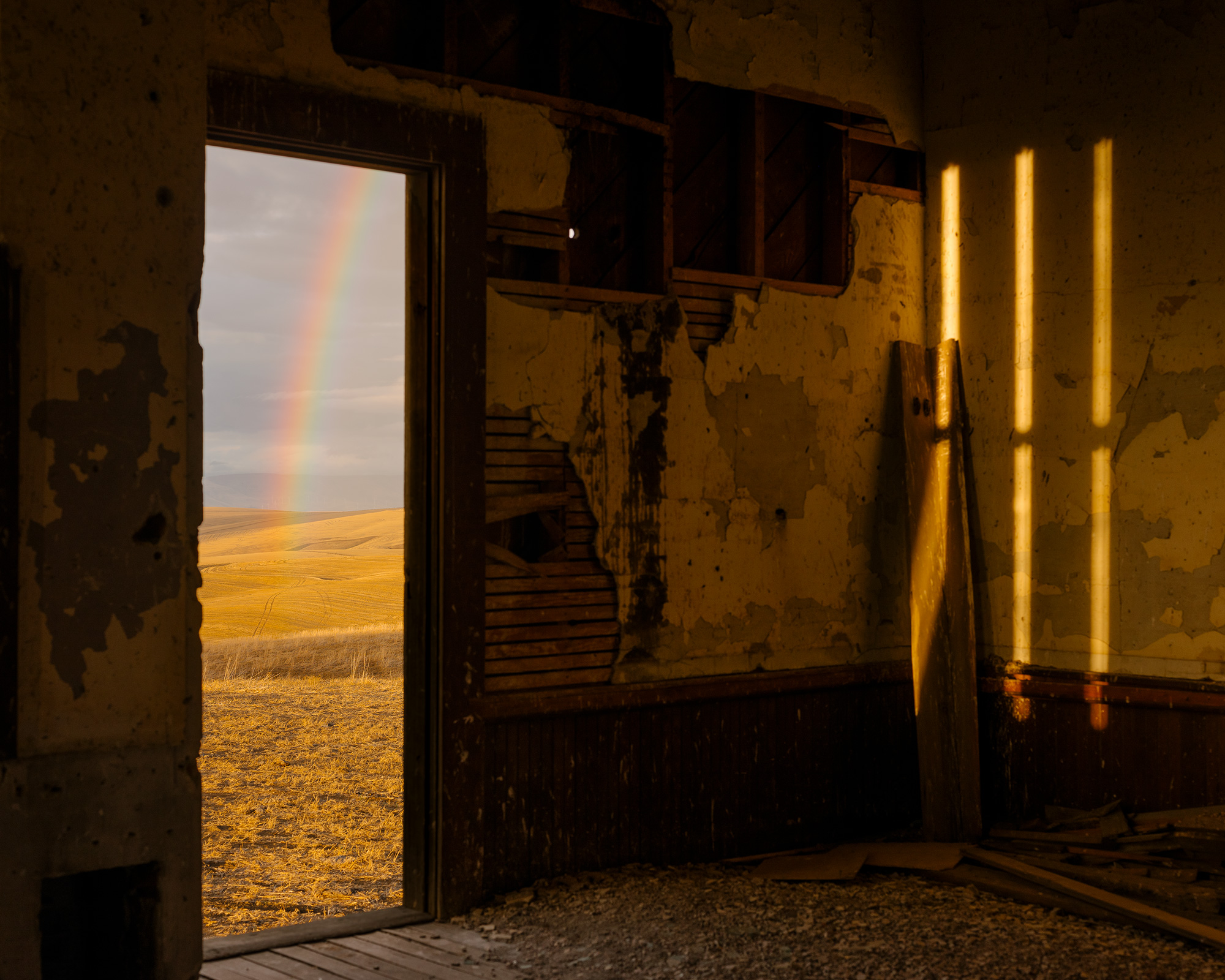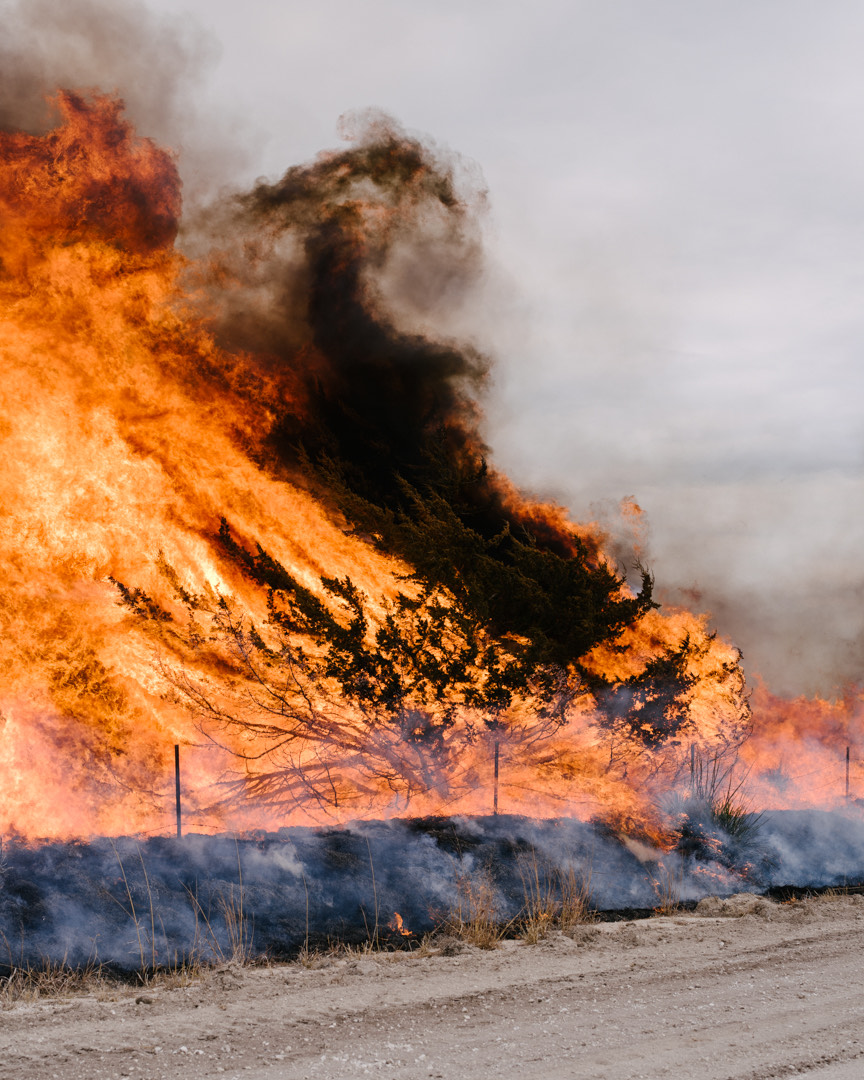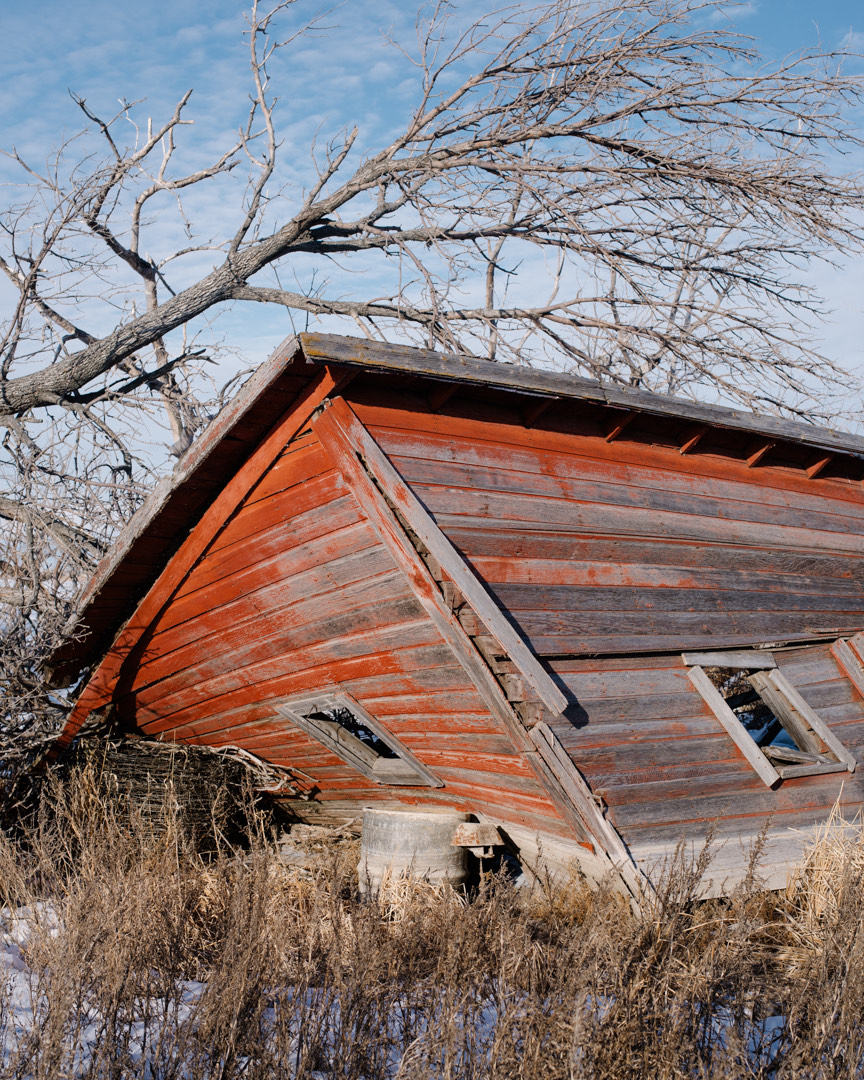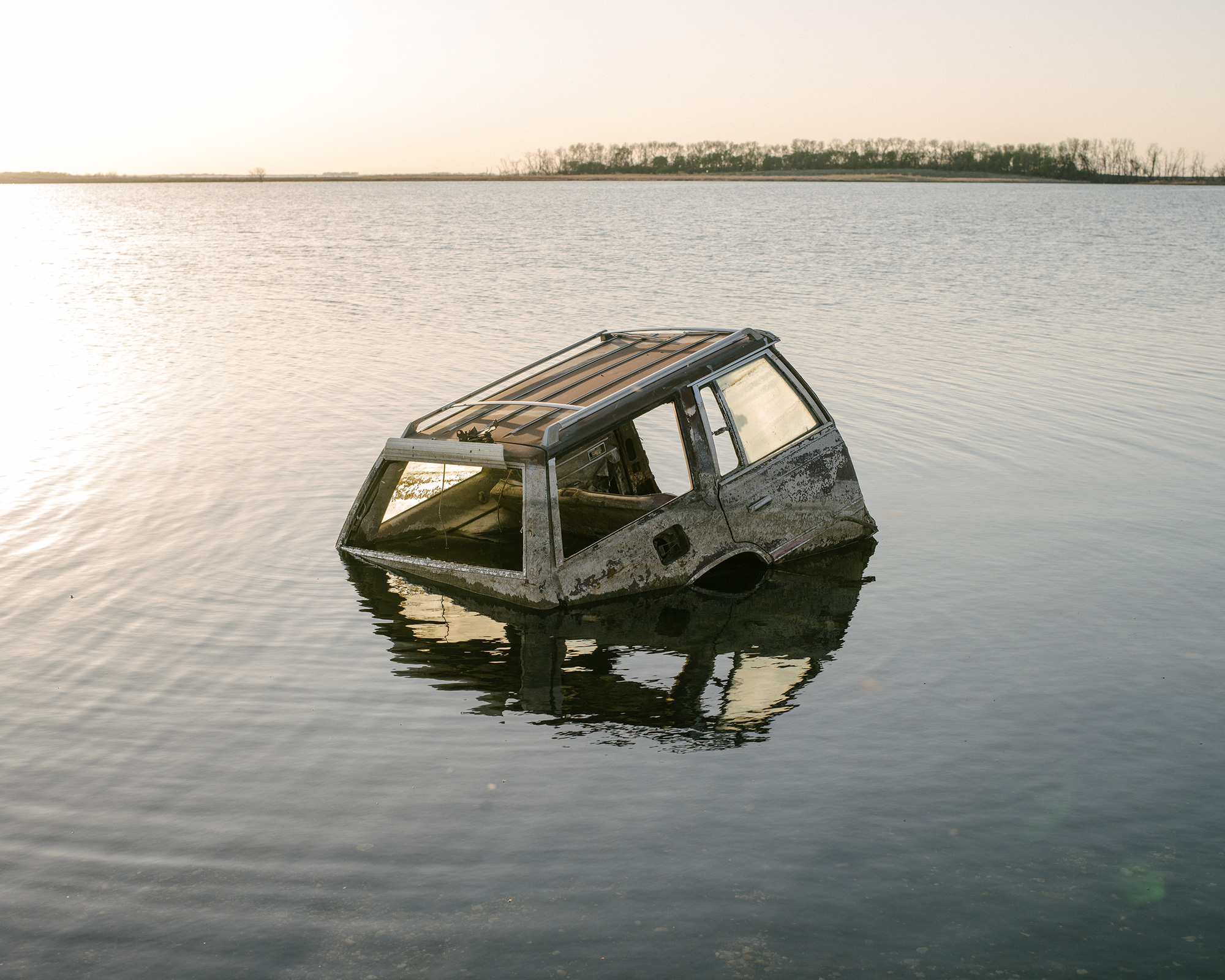A bushfire rages in one image, consuming the branches of a tree at the roadside, thick plumes of smoke rising out of the photograph. The next page shows the same tree, blackened and charred. “Being able to see change that quickly in a place where I thought everything is slow moving changed the way I looked at things,” he says. “It made me pay more attention to time as a theme.”
That also extends to his own personal journey, he adds. Looking back, Bates can pinpoint life events to photographs in the book. “Enormous things happened while making this project. I met my wife, we got married, we moved down to San Francisco, we bought a house, we had a baby,” he says.
Amid the harshness, there is tenderness too. One shot is of a pair of hands with palms upturned, fingers reaching for something unknowable. The hands belong to the landlord of Bates’ brother, who lives in Montana, he says – a middle aged man who raises homing pigeons. One of the birds had just taken off from his finger, and Bates had missed the shot.
But when he got home, he had a realisation. The image was about more than the disappearing pigeon – just like the elusive meadowlark in the empty plains.“It’s more about longing or searching for something,” Bates says. “I like to leave it open to someone making up their own story about it.”
Meadowlark by Ian Bates is out now (Deadbeat Club).

